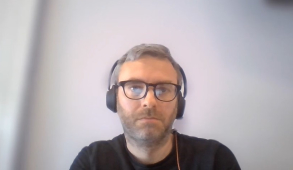News / Payment system proposals for 2023/24, but ERF rules still under discussion
A look at the potential developments of the national payment system for 2023/24
The national body, responsible for the NHS payment system, has been engaging on plans for next year, which are built around the aligned payment and incentive (API) approach, introduced for the first time in April.
The API system incorporates two key elements – a fixed payment and a variable element, both of which help to determine distribution of the elective recovery fund (ERF). A fixed payment is set based on a forward-looking assessment of the costs of delivering an agreed amount of activity. This payment includes funding for delivery of acute elective activity at the level of 104% of 2019/20 activity by value. It also assumes full delivery of CQUIN quality targets and an estimation of the level of best practice tariff (BPT) metrics that will be achieved.
A variable element then adjusts this payment, depending on whether elective activity is above or below the 104% by value of 2019/20 elective activity and depending on actual achievement of CQUIN and BPT targets.
In a webinar this week, NHS England said addressing the elective backlog remained a significant priority for the government, but there had been confusion around the ERF and how it interacts with the variable element. The elective variable element adds or deducts funding based on 75% of national prices.
At an earlier engagement event in July, NHS England announced that one option under consideration for 2023/24 was to use a ‘marginal’ rate of 100%. However, for many systems this year the problem has not been the amount paid for additional activity, but achieving the target activity covered by the fixed payment. If a 100% marginal rate was also used for under-performance, this would actually increase the challenge for NHS providers.
‘For 2023/24 we are continuing to develop what the payment scheme rules for elective activity will look like to support the delivery of as much elective activity as possible,’ said Rob Unsworth (pictured), head of payment policy at NHS England. ‘There is no specific proposal, but there is still work ongoing taking account of feedback from previous engagements and conversations.’
In the current year, there has been no claw back of funds for underperformance in the first six months. And Sir James Mackey, national director of elective recovery, suggested that trusts could be set bespoke activity targets for the second half of the year to reflect trusts’ different positions and the wide-ranging challenges providers have faced in meeting elective recovery targets. These challenges have included higher levels of Covid-19 than anticipated, which has increased levels of staff absence alongside long-standing high levels of vacancies.
Whatever decisions are taken for NHS providers in current and future years, independent sector hospitals are likely to continue to be paid using payment scheme national prices.
The variable elements related to quality were among the most frequent issues cited in the current year when organisations applied for variations to API arrangements. NHS England said it was considering making changes for 2023/24. These might include having only a single agreed payment included in the fixed payment to reflect the anticipated level of achievement with BPTs. This would not be corrected in year if performance was different to the planned level, but the performance would inform the setting of the following year’s planned BPT achievement level. On CQUIN, NHS England is considering having a minimum contract value, below which CQUIN would not apply.
NHS England will continue with low value activity (LVA) arrangements, which build on a process set up during Covid and have proved successful in reducing individual invoicing for small amounts of activity. Under current arrangements for any funding flows below £0.5m, an integrated care board would pay a single fixed value to a provider based on a rolling average of activity or finance payments over the last three years.
This does not accurately match payment to activity each year, but NHS England believes it provides a good approximation, will balance out over multiple years, and reduces invoicing bureaucracy and costs. However, it is considering raising the threshold to take account of currently high inflation and added that delegated services could be paid for using the same mechanism, but not included in the core LVA calculation.
Prices for 2023/24 are expected to be set by rolling forward 2022/23 prices and updating for inflation and efficiency. However, NHS England has also floated the idea of setting a two-year payment system. If this goes ahead, prices for 2024/25 could be updated using a formula, for example using a percentage increase based on the GDP deflator. This would sidestep the need for an annual consultation of the payment system and support moves towards longer term planning.
Formal consultation on the 2023/24 payment system is due to get under way in December.
Related content
From April, some integrated care boards will take on full delegation of specialised services.
A summary of the PSSSG meeting held in January 2024